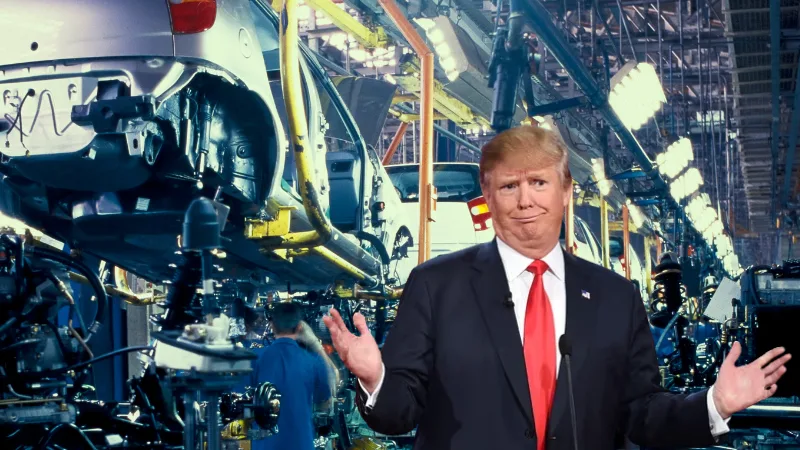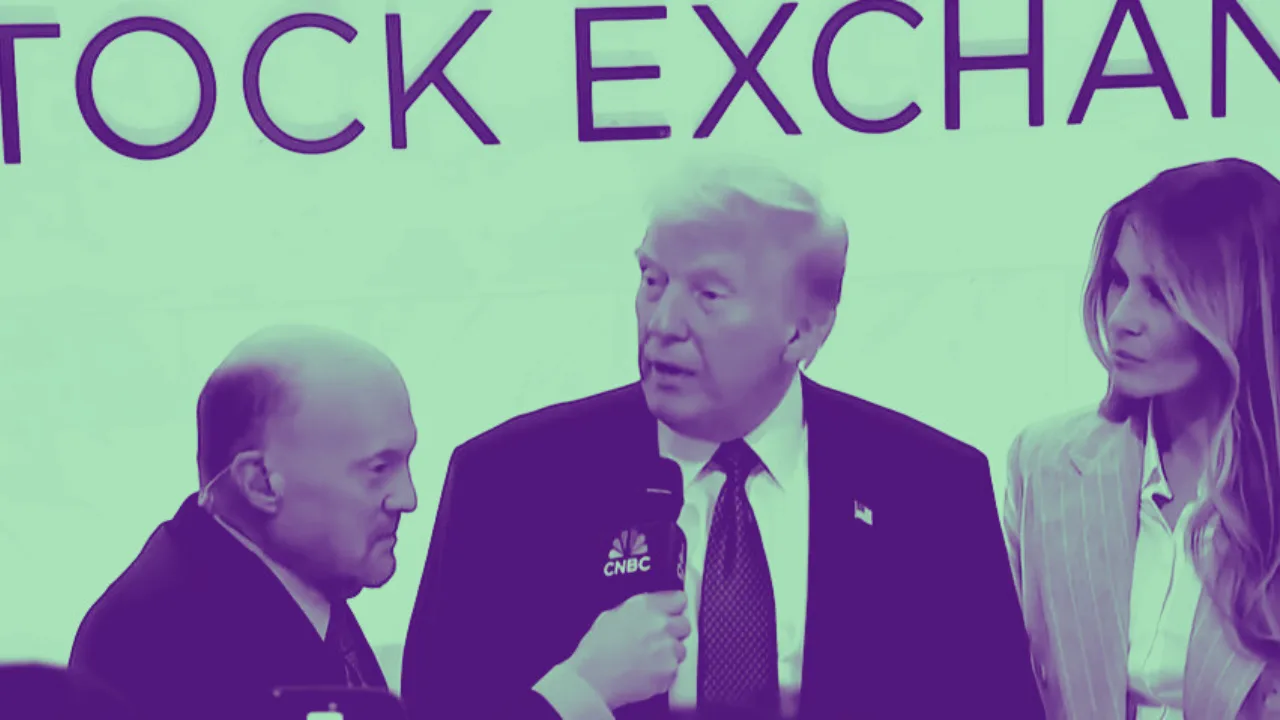As automakers scramble to decode the meaning of “U.S. content,” billions in potential tariff savings hang in the balance. Here’s what it means for manufacturers, markets, and investors.
In a bold move aimed at boosting American manufacturing, President Donald Trump recently enacted a 25% tariff on imported vehicles. The move was softened somewhat by a carve-out: a partial tariff exemption for foreign-built vehicles that contain a high percentage of “U.S. content.” But that relief has been anything but straightforward for automakers—and it’s triggering widespread confusion that could have ripple effects on pricing, production, and ultimately the stock market.
The automotive industry imports around 7.5 million vehicles annually into the U.S., making it highly sensitive to any trade policy shifts. But while Trump’s tariff aims to push automakers toward greater domestic production, the lack of a clear framework around what qualifies as “U.S. content” is muddying the waters.
What Does “U.S. Content” Really Mean?
At the heart of the confusion is a simple phrase with complex implications: “U.S. content.” Under the new rules, automakers are allowed to pay reduced tariffs on vehicles built abroad—but only if they can prove a substantial percentage of the vehicle’s components were made in America.
The administration has yet to publish an official methodology for determining what qualifies. In the meantime, companies are left in limbo.
“We’re all waiting to better understand how this is supposed to be done,” said Jennifer Safavian, CEO of Autos Drive America, a trade group that represents foreign automakers with manufacturing operations in the U.S.
This uncertainty is not trivial. According to a study by the Center for Automotive Research, these auto-import tariffs could increase automaker costs by over $100 billion, depending on how they’re applied.
The Race to Interpret Ambiguous Rules
A key concern is that the rules appear to be based on a vague definition: that parts must be “wholly obtained, produced entirely, or substantially transformed” in the U.S. But this is easier said than done.
Modern vehicle manufacturing relies on complex, global supply chains. A single car might be assembled from 20,000 to 30,000 parts, many of which cross borders multiple times. For example, an engine block might be cast in the U.S., machined in Mexico, and then returned to be assembled in Michigan. Is that considered U.S. content?
Without specific direction from the Department of Commerce, companies have no choice but to create their own interpretations. This opens the door to errors—and potential penalties. The administration has warned that companies caught misrepresenting U.S. content levels could be hit with retroactive tariffs, adding another layer of risk.
The Investment Angle: What This Means for Markets
For investors, the uncertainty presents both risk and opportunity. Automakers heavily reliant on North American imports—especially from Canada and Mexico—may see pressure on their margins. Companies like General Motors, Toyota, Volkswagen, and Stellantis are especially vulnerable.
Case in Point: Toyota’s RAV4
Toyota’s Canadian-made RAV4 SUV, which retails for about $30,000, would incur a $7,500 tariff under the new rule. If Toyota can prove that 60% of the vehicle’s content is American, it might qualify for a reduced tariff—saving the company roughly $3,000 per unit.
Multiply that by the 290,000 RAV4s imported into the U.S. last year from Canada, and you’re looking at a potential $1.3 billion in annual savings—if Toyota can successfully navigate the content rules.
Winners and Losers in the Market
- Volkswagen, which imports a large portion of its U.S. inventory from its factory in Puebla, Mexico, has already announced an “import fee” to offset the tariffs—essentially passing the cost onto consumers.
- Stellantis, the parent company of Chrysler, was forced to pause operations at its Canadian plant for two weeks in response to the tariffs. The Windsor factory produces Chrysler’s only two models sold in the U.S., making it extremely exposed.
Investors should closely monitor earnings reports and executive commentary from these companies over the coming quarters. Any failure to recoup tariff-related costs or adjust supply chains could significantly impact profitability and share prices.
Complications for Supply Chains
Even companies with manufacturing facilities in the U.S. are struggling to determine what qualifies as “domestic.” According to Safavian, automakers often don’t have full visibility into every component sourced from their extensive web of suppliers.
“There’s not just one supplier, there’s many layers of suppliers,” she said.
This is creating friction between OEMs (original equipment manufacturers) and parts suppliers, many of whom are also grappling with how to classify components under the new rules. While most companies can identify whether a part is made in North America—a requirement under the U.S.-Mexico-Canada Agreement (USMCA)—that’s not the same as proving it’s made in the United States.
The White House has stated that the Commerce Department is working on a formal approval process for claiming U.S. content, but no clear timeline has been provided. Until then, companies are forced to pay the full 25% tariff—and hope for refunds later if they qualify for deductions.
Short-Term Relief? Maybe.
President Trump has hinted at temporary exemptions for automakers shifting production from Canada or Mexico back to the U.S. But as of now, these promises are more aspirational than actionable.
“They need a little bit of time because they’re going to make them here,” Trump said, without offering further specifics.
Meanwhile, tariffs on auto parts are scheduled to go into effect on May 3, raising further concerns for an industry already on edge.
What Should Investors Watch For?
As the auto sector tries to decode the administration’s rules, investors should keep a close eye on the following:
- Company-specific exposure: Automakers with large portions of their fleet built in Canada or Mexico may face steeper short-term losses. This includes Stellantis, Volkswagen, GM, and Toyota.
- Supply chain restructuring: Watch for capital expenditures and restructuring announcements that may indicate a long-term shift to more U.S.-based production.
- Pricing strategies: Companies may pass on tariff costs to consumers. Rising sticker prices could dampen demand, especially for lower-margin models.
- Policy clarity: Any update from the Commerce Department or White House offering concrete rules around “U.S. content” could act as a catalyst for stock movement.
Long-Term Implications
The tariff situation also raises larger questions about how the U.S. defines “Made in America.” In an increasingly globalized economy, where even domestic factories rely on cross-border inputs, determining true domestic value-add is no small feat.
The lack of clarity may deter future investment in North American manufacturing until a stable, predictable framework is in place. It also complicates decision-making for electric vehicle (EV) production, where battery supply chains stretch across multiple continents.
Moreover, this uncertainty could accelerate the shift toward vertical integration, where automakers bring more of the supply chain in-house to gain better control and transparency over parts sourcing. That trend could have major implications for parts suppliers and logistics companies alike.
Final Thoughts for Investors
For those with exposure to the auto industry—either directly through individual stocks or indirectly through ETFs like Global X Autonomous & Electric Vehicles ETF (DRIV) or iShares U.S. Consumer Goods ETF (IYK)—this is a moment to monitor policy developments closely.
Volatility may continue in the short term, but smart investors can find opportunity in companies that adapt quickly. Those with transparent, efficient supply chains and the flexibility to shift production back to the U.S. are likely to emerge stronger—and more valuable—in a protectionist trade environment.





